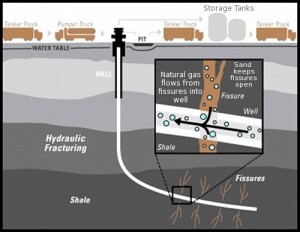“POTS” is phone-geek and industry slang for “Plain Old Telephone Service.” A P.O.T.S. pone is a telephone, rotary (that’s a “dial,” a big wheel on the front of the phone, for our younger readers) or touch-tone, which doesn’t have a whole bunch of extra features requiring, usually, direct current (DC), which in the United States, usually means an unwieldy black “power brick,” which is plugged into a wall socket or extension cord, converts the alternating current to direct current, powers the extra features (speakers, lights, answering machine) but not the voice connection itself – which is powered by the telephone system at the nearest phone company facility, usually referred to as the “central office,” although, unlike regular offices, they’re often unattended. One can’t walk in and pay a bill, or request service; in that sense, it’s not an office at all. Think of it as network hub. Better-run telephone companies, certainly including the company we now refer to as “Verizon,” but which others of us grew up thinking of as “New York Telephone,” have their own emergency generators.
So – when the power grid fails, assuming the copper wires which connect you to your central office haven’t been cut (more likely in suburban or rural areas where the cost of laying underground cable for a relatively sparse population is prohibited your “POTS” phone will still work in a power outage. You can still call 911, for instance.
However, if you have a “POTS” phone but no one you care about does – not so good.
So – what we at Popular Logistics would like you to do is this: buy yourself a POTS phone, better yet, buy several of them, and then use your powers of persuasion to make sure that the people you care about and who care about you have them, too.
If you’re only going to have one, we suggest a touch-tone phone, because there are systems which will want you to enter data via the keypad.
Reasons for ignoring this advice, and why they don’t stand up to scrutiny
“They don’t make them anymore.” That’s not true, and we’re going to show you here to get them.
“They must be really expensive.” Also not true – we’ve found reliable reconditioned touch-tone desk telephones for as low as $10 with shipping, and if you buy a few at once, the shipping costs get lower. And if we can get enough readers to do this, we might be able to work out a bulk purchase.
“They’re ugly.” We don’t think so. Neither do the Museum of Modern Art, which has telephone by the industrial designer Henry Dreyfuss in its Design Collection, as does the Cooper-Hewitt design museum, which is part of the Smithsonian Institution.
“I’ve already got a mobile phone, and ‘regular’ service is an extra expense.” (1) If the power goes out your smart phone i s going to be hard to recharge; (2) depending on your plan, using a landline for outbound calls from home can actually reduce your mobile bill.
One last point – of the many elegant features of telephone design, it’s worth noting two which make them exceptionally “green” devices. First, the older (and recent, but better-made) telephones use so little power that they can be powered from the central office. They use much more power, in fact, to ring the bell than to carry two-way voice conversations. Second, telephones designed in the 1950’s with a planned lifespan of 25 years are still in service. How many electrical or electronic devices do you own that have worked for that long and not ended up in a landfill? And when they do break, telephone enthusiasts both amateur and professional often scavenge the parts or fix broken parts, further extending their life. I have on my desk a green model 2500 ITT desk telephone which is nearly as old as I am, much older than my children both recently graduated from college with all sorts of honors, thank you very much – not that either has a POTS line. But if the test of good advice were whether one’s own children took it, we’d be living in an entirely different society.
So – in the hopes that we’ve persuaded you that this small purchase will reduce the risk of your being incommunicado in an emergency, and might also save you some money and reduce your carbon footprint – we will, in sort order, tell you about some individual phones and source.
My green desk phone, BTW, came from the excellent Jonathan Finder of OldPhones.com





